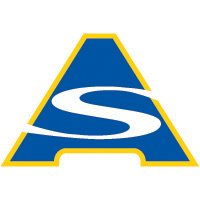What do they do?
Diagnose, adjust, repair, or overhaul motorcycles, scooters, mopeds, dirt bikes, or similar motorized vehicles.
Also known as:
All Terrain Vehicle Technician (ATV Technician), Custom Bike Builder, Motorcycle Mechanic, Motorcycle Service Technician, Motorcycle Technician, Motorsports Technician, Scooter Mechanic, Service Technician
-
9.1%
Change
Ranks #37 in job growth rate80Job Openings
Ranks #6 in net job growth
-
American Technical Institute
Bayamon, PR
-
SUNY College of Technology at Alfred
Alfred, NY
-
Motoring Technical Training Institute
Seekonk, MA
Looking for colleges that offer a specific major? Use the College Match Tool to find your best-matched schools and discover your estimated Net Price!
- Doctorate or Professional Degree (<1%)
- Master's degree (<1%)
- Bachelor's degree (5%)
- Associate's degree (11%)
- Some college, no degree (28%)
- High school diploma equivalent (44%)
- Less than high school diploma (12%)
People in this career often have these skills:
- Troubleshooting - Determining causes of operating errors and deciding what to do about it.
- Repairing - Repairing machines or systems using the needed tools.
- Equipment Maintenance - Performing routine maintenance on equipment and determining when and what kind of maintenance is needed.
People in this career often know a lot about:
- Mechanical - Knowledge of machines and tools, including their designs, uses, repair, and maintenance.
- English Language - Knowledge of the structure and content of the English language including the meaning and spelling of words, rules of composition, and grammar.
- Customer and Personal Service - Knowledge of principles and processes for providing customer and personal services. This includes customer needs assessment, meeting quality standards for services, and evaluation of customer satisfaction.
- Computers and Electronics - Knowledge of circuit boards, processors, chips, electronic equipment, and computer hardware and software, including applications and programming.
People in this career often have talent in:
- Deductive Reasoning - The ability to apply general rules to specific problems to produce answers that make sense.
- Inductive Reasoning - The ability to combine pieces of information to form general rules or conclusions (includes finding a relationship among seemingly unrelated events).
- Manual Dexterity - The ability to quickly move your hand, your hand together with your arm, or your two hands to grasp, manipulate, or assemble objects.
- Finger Dexterity - The ability to make precisely coordinated movements of the fingers of one or both hands to grasp, manipulate, or assemble very small objects.
- Oral Comprehension - The ability to listen to and understand information and ideas presented through spoken words and sentences.
- Arm-Hand Steadiness - The ability to keep your hand and arm steady while moving your arm or while holding your arm and hand in one position.
- Near Vision - The ability to see details at close range (within a few feet of the observer).
- Hearing Sensitivity - The ability to detect or tell the differences between sounds that vary in pitch and loudness.
- Problem Sensitivity - The ability to tell when something is wrong or is likely to go wrong. It does not involve solving the problem, only recognizing that there is a problem.
- Control Precision - The ability to quickly and repeatedly adjust the controls of a machine or a vehicle to exact positions.
People in this career often do these activities:
- Inspect vehicles to determine overall condition.
- Adjust vehicle components according to specifications.
- Replace worn, damaged, or defective mechanical parts.
- Repair non-engine automotive or vehicle components.
- Disassemble equipment for maintenance or repair.
- Repair defective engines or engine components.
- Measure equipment outputs.
- Observe equipment in operation to detect potential problems.
- Confer with customers or users to assess problems.
- Disassemble equipment to inspect for deficiencies.
- Reassemble equipment after repair.
- Install vehicle parts or accessories.
- Grind parts to required dimensions.
- Install parts, assemblies, or attachments in transportation or material handling equipment.
- Test mechanical equipment to ensure proper functioning.
- Assemble mechanical components or machine parts.
- Remove dents from equipment, materials, tools or structures.
- Operate welding equipment.
This page includes data from:

 Occupation statistics: USDOL U.S. Bureau of Labor Statistics Occupational Employment Statistics
Occupation statistics: USDOL U.S. Bureau of Labor Statistics Occupational Employment Statistics





